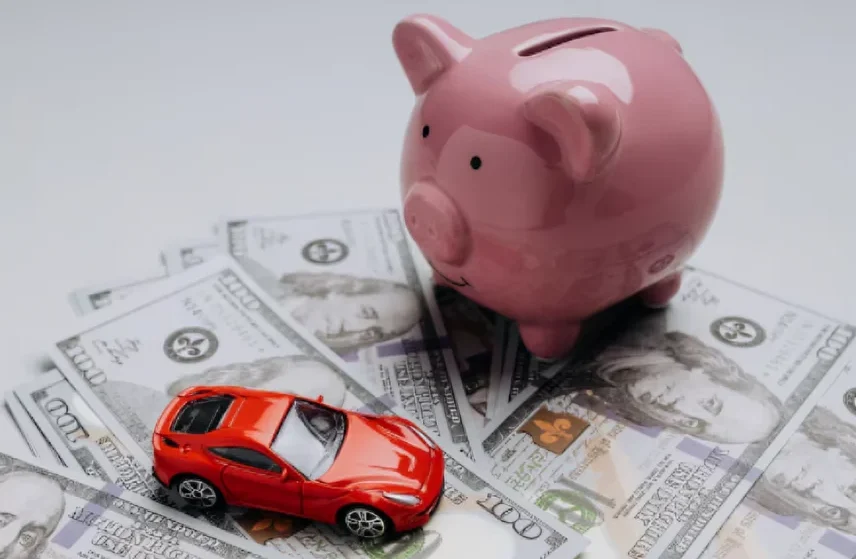If you’re buying a car this year, one of the most important numbers to understand is the current car loan interest rate. After all, it’s not just about the sticker price anymore. With rates fluctuating rapidly in 2025, your loan’s APR can significantly impact both your monthly payment and, more importantly, your total cost over time. Therefore, understanding the current lending landscape is essential before signing any paperwork. In this guide, you’ll learn what affects today’s auto loan rates, how to qualify for the lowest possible rate, and, most importantly, where to find the most competitive offers available right now.
Why the Current Car Loan Interest Rate Matters
Too often, buyers only focus on monthly payments. But behind every low monthly number may be a long term loan with a high interest rate. That’s why understanding the current car loan interest rate matters it can save you thousands over the life of your loan.
Moreover, lenders use this rate to calculate risk. A better interest rate means lower risk to you and less money out of your pocket. So if you’re shopping for a car, knowing today’s rate is essential before signing any contract.
What Is the Current Car Loan Interest Rate in 2025?
As of mid-2025, auto loan rates are holding steady with some increases due to inflation and Federal Reserve policies. Here are the average ranges:
New cars: 5.1% – 7.9%
Used cars: 6.5% – 10.8%
These averages depend on many factors, including credit score, lender, loan term, and vehicle age. For instance, someone with excellent credit may get as low as 4.5%, while others with average credit may face rates above 9%.
For up-to-date information, sites like Bankrate offer daily rate updates and lender comparisons.
Key Factors That Affect Your Interest Rate
Let’s explore what determines your current car loan interest rate so you can take control before applying.
1. Credit Score
Your credit score is the biggest factor. A higher score typically means a lower rate. Here’s a rough breakdown:
Excellent (750+): 4.5% – 5.5%
Good (700–749): 5.6% – 6.8%
Fair (640–699): 7.0% – 9.4%
Poor (<640): 10% and up
Improving your credit even slightly before applying can reduce your interest rate noticeably.
2. Loan Term Length
Shorter terms such as 36 or 48 months generally come with lower interest rates. Longer loans like 72 or 84 months might reduce your monthly payment but cost you more overall.
3. Type of Vehicle
New cars often come with lower rates compared to used vehicles. Lenders consider them less risky due to their warranty coverage and slower depreciation.
4. Lender Type
Banks, credit unions, and online lenders each offer different rates. Credit unions are known for offering lower than average auto loan rates to their members. Online lenders, meanwhile, often provide quick approvals and flexible options.
How to Get the Lowest Car Loan Interest Rate in 2025
Even in a high-interest environment, you can take steps to secure a great rate. Here’s how:
Check and Improve Your Credit Score
Get a free credit report and fix any issues. Even a small increase in your score can lower your APR significantly.
Get Pre Approved
Pre approval shows sellers you’re serious and gives you negotiating power. It also protects you from unfavorable dealership rates.
Shop Multiple Lenders
Don’t accept the first offer. Compare rates from credit unions, banks, and online lenders. Use sites like LendingTree to explore your options in one place.
Increase Your Down Payment
A higher down payment lowers the principal, reducing your interest charges and improving approval odds.
Choose a Shorter Term
While monthly payments will be higher, shorter terms often come with lower APRs and save you money long term.
2025 Auto Loan Trends to Watch
Understanding the trends shaping today’s market gives you a serious advantage:
Higher Fed Rates: Auto loan rates are rising due to Federal Reserve hikes aimed at controlling inflation.
EV Discounts: Electric vehicle buyers may find lower rates and incentives offered by manufacturers or federal programs.
Digital Lenders: Online financing platforms are offering better rates and faster processing times than traditional institutions.
These trends mean it’s more important than ever to compare your options before accepting any financing offer.
Dealer Financing vs. Bank or Credit Union Loans
Many buyers don’t realize how much dealership financing can cost them in the long run.
Dealer Financing:
While they offer convenience and promotions (like 0% APR), these offers usually require perfect credit and may replace better cash incentives or rebates.
Bank or Credit Union Loans:
These loans typically offer more flexible terms and are easier to compare. Walking into a dealership with your financing already secured gives you control and bargaining power.
Tip: Always get pre-approved from an external lender, even if you end up going with the dealer’s offer. It gives you a benchmark to compare.
Hidden Fees That Could Raise Your Cost
Even if you qualify for a low rate, fees can quietly inflate your loan. Always watch out for:
Loan origination fees
Documentation charges
Prepayment penalties
Mandatory add ons (like GAP insurance or extended warranties)
Ask for a breakdown of total loan cost, not just the monthly payment. A smart buyer looks at the full picture.
Final Thoughts
The current car loan interest rate in 2025 is a key factor that affects how much your vehicle will truly cost. Whether you’re buying new or used, a smart financing plan can make the difference between overpaying and saving thousands.
To recap:
Check your credit before applying
Compare lenders (don’t stop at the dealership)
Opt for a shorter term if you can afford it
Watch out for hidden fees
And most importantly, know the rate you deserve
Auto financing isn’t just a numbers game it’s a strategy. Take control, stay informed, and drive away with the best deal possible.










